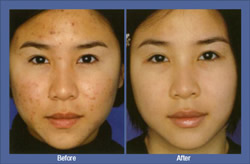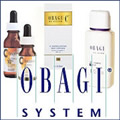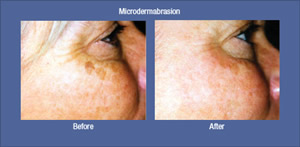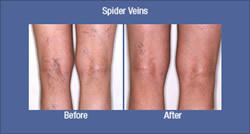 |
|
| Home | LASIK | Procedures | Comprehensive Eye Care | Cosmetics | About | Contact |

|
||
BOTOX BOTOX® Cosmetic is a simple, nonsurgical, physician-administered treatment that can temporarily smooth moderate to severe frown lines between the brows in people from 18 to 65 years of age. It is the only treatment of its type approved by the Food and Drug Administration (FDA). BOTOX® Cosmetic is a simple, nonsurgical, physician-administered treatment that can temporarily smooth moderate to severe frown lines between the brows in people from 18 to 65 years of age. It is the only treatment of its type approved by the Food and Drug Administration (FDA).One 10-minute treatment—a few tiny injections—and within days there's a noticeable improvement in moderate to severe frown lines between the brows, which can last up to 4 months. Results may vary. BOTOX® Cosmetic is a purified protein produced by the Clostridium botulinum bacterium, which reduces the activity of the muscles that cause those frown lines between the brows to form over time. In 2005, almost 3.3 million procedures were performed with FDA-approved BOTOX® Cosmetic.There’s only one BOTOX® Cosmetic. Talk to your doctor to see if BOTOX® Cosmetic is right for you!
Botox Cosmetic may work for you.
So why not ask your doctor if BOTOX® Cosmetic is right for you? What To Expect at the Doctor’s OfficeBefore you try and schedule your first BOTOX® Cosmetic treatment consultation, you probably have some questions, such as: How long will it take? How long will the results last? Will it hurt? Will I still be able to make facial expressions? Here's what you might expect at the doctor's office from the moment you arrive until your procedure is done. (Please note that although this experience is typical, the routine at your doctor's office may be different.) The day of your appointment. Allow time before your appointment for filling out forms and for consulting with the doctor or a member of his or her staff. If it's your initial visit, you may first meet with your doctor personally or a staff member. Many doctors have on-staff licensed aestheticians or nurses who are trained in skin care and skin care procedures who can answer many of your questions. You may also be asked about your expectations for treatment and if you have any allergies or any condition that wouldn't make you a good candidate for BOTOX® Cosmetic. Before the procedure. You'll probably be seated in a reclining chair, much like you find in a dentist's office. No anesthesia is required, although your doctor may choose to numb the area with a cold pack or anesthetic cream. The procedure. Your doctor will determine where to administer the injections by examining your ability to move certain muscles in your brow area. The entire BOTOX® Cosmetic injection procedure takes approximately 10 minutes. After the procedure. There's no recovery time needed. You're ready to get on with your day! The most common side effects following injection include temporary eyelid droop and nausea. Localized pain, infection, inflammation, tenderness, swelling, redness, and/or bleeding/bruising may be associated with the injection. Patients with certain neuromuscular disorders such as ALS, myasthenia gravis, or Lambert-Eaton syndrome may be at increased risk of serious side effects. Seeing results. Within days, you may notice an improvement in the moderate to severe frown lines between your brows that can last up to 4 months. Results may vary. What Does FDA Approval Mean?You've heard it many times before: A product is advertised as "FDA-approved." But what does that really mean? In the United States, prescription drugs and biologics are required to undergo rigorous laboratory, animal, and human clinical testing before they can be put on the market. The Food and Drug Administration (FDA) reviews the results of these studies to:
What about BOTOX® Cosmetic?BOTOX® Cosmetic received FDA approval in 2002 for the temporary treatment of moderate to severe frown lines between the brows in people 18 to 65 years of age. BOTOX® Cosmetic is available by prescription only. BlepharoplastyDid you know that your eyes are the most important aspect of your facial attractiveness. Loose skin over your eyes and fat bags under your eyes can make you appear sad, tired, or older than you are really are. Dr. Chaudhry can restore a more youthful, alert, and healthy looking appearance to your eyes with this minimally invasive procedure. Blepharoplasty is one of the most popular cosmetic procedures due to a high level of patient satisfaction for both men and women.The Effects of Heredity and Time
Your eyes are usually the first thing that people notice about your appearance. They are probably the most important aspect of facial attractiveness. Even with a good night’s sleep, loose skin over your eyes or fat bags under your eyes can make you look tired or sad or older than you really are. As we go through life, even if we have taken care of ourselves, the skin around our eyes stretches and wrinkles. Fatty deposits cause the upper lids to sag while under the eye the tissue can bulge forward and become discolored. In severe cases, vision can become partially blocked. Typically, these unwanted characteristics come with age, beginning in the late thirties and early forties, but hereditary factors can cause a much younger person to appear prematurely aged. Exposure to the sun, use of alcohol, smoking, and less than optimal nutrition all accelerate the signs of aging. Fortunately, through modern techniques and advances in an eyelid rejuvenation procedure called blepharoplasty, your doctor can help restore a more youthful, alert, and healthy look to your eyes. Sometimes referred to as a “mini-face lift,” blepharoplasty has become one of the most popular cosmetic procedures for both men and women because of its high level of patient satisfaction. Blepharoplasty can be performed on both the upper and lower eyelids. Before BlepharoplastyAs a general rule, insurance does not cover cosmetic surgery. However, if your eyelids are encroaching upon your field of vision, the procedure may be covered as “medically necessary” surgery. Eyelid surgery (technically called blepharoplasty) is a procedure to remove fat--usually along with excess skin and muscle from the upper and lower eyelids. Eyelid surgery can correct drooping upper lids and puffy bags below your eyes - features that make you look older and more tired than you feel, and may even interfere with your vision. However, it won't remove crow's feet or other wrinkles, eliminate dark circles under your eyes, or lift sagging eyebrows. While it can add an upper eyelid crease to Asian eyes, it will not erase evidence of your ethnic or racial heritage. Blepharoplasty can be done alone, or in conjunction with other facial surgery procedures such as a facelift or browlift. Before surgery, Dr. Chaudhry will evaluate the condition and health of your eyes. Specifics regarding your vision, tear production, use of contact lenses, use of medications, and personal expectations will be discussed. This information, along with other factors such as age, skin type, and ethnic background, will allow both you and your surgeon to come to a mutual decision. Together, a plan will be discussed regarding the surgical technique, amount of surgery, and type of anesthesia to be used. Complications can occur with any surgery; however, with blepharoplasty, serious complications are rare, and most that do occur can usually be corrected. Be sure to ask your doctor any questions you may have regarding risks and complications before giving your consent for blepharoplasty. During BlepharoplastyBlepharoplasty is generally done using local anesthetic. You may be given a mild sedative to help you relax. Depending on the amount of tissue to be removed, you could be in the operating suite for several hours. When performed on the upper eyelids, your doctor will remove the excess skin, muscle, and fatty tissue that tend to accumulate in the inside corner of the eye, next to the nose. The incisions are made along the natural folds in the skin so that as they heal, they become difficult, if not impossible, to see with the passage of time. When performed on the lower eyelids, providing there is not too much excess skin, your Dr. Chaudhry will make the incision inside or behind the eyelid. This technique is called a transconjunctival blepharoplasty which allows the removal of fatty deposits while avoiding the need for an external incision. If there is excessive skin or muscle folds below the eye, an incision may also be made just below the base of the eyelashes. As this incision heals, the fine scar should also become barely visible. After BlepharoplastyAfter the procedure, you will need to have someone drive you home. Bruising and swelling is common after the surgery and is usually noticeable for a week to a month after the surgery, but longer in some cases. Cold compresses as well as head elevation will help reduce swelling and bruising and minimize discomfort. Eye ointments and/or eye drops may be given to keep the eye moist and clean. Postoperative discomfort is usually relatively mild, although this will vary from patient to patient. Most patients require little, if any, pain medication. Your eyes may feel sticky, dry, and itchy for a week or so after the procedure. You will need to take special care in cleaning around the eyes for the first week or two. Your surgeon will give you a list of activities and environments to avoid during that time. Stitches are usually removed within five to ten days after surgery. Self-absorbing stitches will dissolve on their own. Make-up can usually be applied to camouflage bruising after the stitches are removed and a good pair of sunglasses may help you feel better when in public for a while. It is important to follow all of your post-operative instructions to speed healing and reduce the risks of incurring complications. Results of BlepharoplastyMost patients experience a marked improvement in the appearance of their eyes after blepharoplasty. In addition to improving some patients’ vision, most patients report feeling more alert and energetic. Although the positive effects of having blepharoplasty on your appearance will be immediate, your results will not be considered final for up to a year as the healing process continues. If you want to look as good as you feel, ask your doctor if you are a candidate for blepharoplasty. ObagiHas daily exposure to UV light accelerated your aging process and caused uneven pigmentation to your skin? Ask us about the Obagi System designed to transform your skin at the cellular level by incorporating a daily regimen of physician prescribed protocol.Let the Transformation BeginFind out about Obagi System skin care products and how they Transform your skin at the cellular level to look and act younger and healthier.
How Skin Ages
TRANSFORMED SKINWhen skin is Transformed by Obagi System skin care, damaged skin cell functions are corrected. The skin's cellular functions are accelerated allowing continual renewal as dead skin cells are replaced by fresh cells pushed to the skin's surface, making the surface (stratum corneum) smoother and naturally hydrated. Freckles and age spots disappear. Pigment cells (melanin) are evenly distributed, preventing the appearance of new freckles and age spots. The skin is rich in collagen and elastin that promote resilience and firmness. All these functions work together to keep skin looking and acting younger and healthier. The Obagi NuDerm® System: For Skin That Looks and Acts Younger and Healthier
The Obagi Nu-Derm System, a physician-prescribed skin care system, accelerates the cellular turnover. This System penetrates below the skin's surface to correct damage in all layers of the skin (the stratum corneum, the epidermis and the dermis). It corrects functions of the skin at the cellular level, to Transform skin's cellular function to help it look and act younger and healthier. The System triggers a Therapeutic Cascade™ that:
The Obagi NuDerm® System: During treatment, you can expect to experience four phases as your skin undergoes its Transformation to a more healthy and younger-looking appearance. The length of time between the phases will vary based upon multiple factors including patient age, skin type, amount of damage and daily compliance. In this initial phase, the damaged top layer of skin is replaced by a new layer of fresh, healthy skin cells. This process takes approximately 6 weeks. During this phase, you can expect to experience one or more of these symptoms:
These reactions are indications that the treatment is working. It is absolutely necessary to stay with the program to see these results. In with the New As correction and stimulation continues, you begin to notice significant improvements in your skin. New skin cells continue reaching the surface and the production of collagen and elastin increases. Expect to notice:
In this phase, your friends will begin to notice your skin. It has been Transformed to function properly, making skin look and act younger and healthier. Your skin is:
In order to keep your skin looking and acting younger and healthier, you will want to continue to use the Obagi Nu-Derm System to maintain the improved results you have achieved. By continuing with a maintenance protocol, you can expect to:
What can the Obagi Nu-Derm System do for your skin?
Why is the Obagi Nu-Derm System better than other products? Regardless of skin type and condition, the Obagi Nu-Derm System has demonstrated superior results time and time again. In a recent clinical study involving 301 patients, the Obagi Nu-Derm System was proven to be 2-3 times more effective than other commonly prescribed skin care treatments. In only 12 weeks, patients with mild to moderate photodamaged skin yielded significant improvements in key measures of photodamaged skin. How can you purchase the Obagi Nu-Derm System? Through your physician. Because the Obagi Nu-Derm System is a prescription-based protocol and requires diagnosing and monitoring, it is available by physician only. Your physician and skin care professional are specially trained to deliver maximum results for you. WARNINGS: The procedure for and use of TCA can only be performed by a Physician or if permitted by law, a properly trained specialist working under a Physician’s supervision. Proper medical knowledge is essential to the performance of any TCA peel. The treating Physician is responsible for informing a patient about potential medical risks and complications. MicrodermabrasionDo you dream about younger, healthier and more radiant looking skin? SmartPeel microdermabrasion is a safe non-invasive alternative to chemical peels or laser surgery that can be achieve in a quick 30 minute session. A routine exfoliation treatment will result in younger, healthier, and more radiant skin.
Sclerotherapy (spider veins)Sclerotherapy involves injecting a liquid agent through a tiny needle directly into your spider veins, causing them to contract and collapse. This procedure is best suited for medium to large spider veins because it relies upon fitting a tiny needle into a tiny vein. The procedure is performed in the office by the doctor and is relatively painless. Depending on the number of spider veins, the procedure may require five minutes to one hour. Afterward, you will wear ace bandages or compression hose for three to ten days as recommended by the doctor. You may resume sedentary activities immediately but should avoid exercise, hot baths and alcohol for two to three days. You should anticipate 50% improvement in spider veins following each sclerotherapy session. Expect that two to six sclerotherapy sessions at one to two month intervals may be necessary to achieve your desired results. Understand that some spider veins may never be successfully treated through sclerotherapy.Benefits of Spider Vein Removal
It is important to discuss with your doctor the reasons why you are considering spider vein removal. Your doctor will be able to assess your expectations and discuss the possible outcomes of spider vein removal. | ||
|
|||||||
| |
 When it comes to selecting a physician-administered aesthetic treatment, chances are you’ll want proof, not just claims. The proof for BOTOX® Cosmetic is in the numbers.
When it comes to selecting a physician-administered aesthetic treatment, chances are you’ll want proof, not just claims. The proof for BOTOX® Cosmetic is in the numbers.
 Over time, normal aging and damage from the environment (sun, stress and pollution) cause skin to lose its ability to 'renew' itself properly. Cell turnover slows, causing the dead skin layer at the stratum corneum or surface to be thicker and slowing the flow of moisture from within, resulting in dry uneven skin texture. Skin cells are disorganized and misshapen. Daily exposure to sunlight causes the amount of pigment in each cell to increase, producing freckles or age spots and uneven skin tone. Collagen and elastin begin to break down, causing the skin to lose its resilience, resulting in fine lines, wrinkles and sagging.
Over time, normal aging and damage from the environment (sun, stress and pollution) cause skin to lose its ability to 'renew' itself properly. Cell turnover slows, causing the dead skin layer at the stratum corneum or surface to be thicker and slowing the flow of moisture from within, resulting in dry uneven skin texture. Skin cells are disorganized and misshapen. Daily exposure to sunlight causes the amount of pigment in each cell to increase, producing freckles or age spots and uneven skin tone. Collagen and elastin begin to break down, causing the skin to lose its resilience, resulting in fine lines, wrinkles and sagging. As you age and your skin incurs the abuse of daily living (such as sun, stress, pollution), the cell turnover rate slows down. This means that the new cells take longer to form and reach the top. The old cells accumulate and stay on the surface longer. As the stratum corneum thickens and the area of new cells shrink, skin becomes less healthy. You begin to notice those unwelcome signs of aging including: fine lines and wrinkles, freckles and age spots, uneven skin tone, loss of elasticity and loss of natural skin hydration.
As you age and your skin incurs the abuse of daily living (such as sun, stress, pollution), the cell turnover rate slows down. This means that the new cells take longer to form and reach the top. The old cells accumulate and stay on the surface longer. As the stratum corneum thickens and the area of new cells shrink, skin becomes less healthy. You begin to notice those unwelcome signs of aging including: fine lines and wrinkles, freckles and age spots, uneven skin tone, loss of elasticity and loss of natural skin hydration. With conscientious use of the Obagi Nu-Derm System ( as prescribed by your physician), photodamaged and hyperpigmented skin can be transformed to look and act younger and healthier. Your skin will be smoother, firmer, more even-colored and properly hydrated. You and others will notice significant improvement in the way your skin looks and feels.
With conscientious use of the Obagi Nu-Derm System ( as prescribed by your physician), photodamaged and hyperpigmented skin can be transformed to look and act younger and healthier. Your skin will be smoother, firmer, more even-colored and properly hydrated. You and others will notice significant improvement in the way your skin looks and feels. Microdermabrasion is a skin-freshening technique that helps repair facial skin that takes a beating from the sun and the effects of aging. The plastic surgeon uses a device like a fine sandblaster to spray tiny crystals across the face, mixing gentle abrasion with suction to remove the dead, outer layer of skin. As with other skin rejuvenation techniques, more than one treatment may be needed to reduce or remove fine wrinkles and unwanted pigmentation
Microdermabrasion is a skin-freshening technique that helps repair facial skin that takes a beating from the sun and the effects of aging. The plastic surgeon uses a device like a fine sandblaster to spray tiny crystals across the face, mixing gentle abrasion with suction to remove the dead, outer layer of skin. As with other skin rejuvenation techniques, more than one treatment may be needed to reduce or remove fine wrinkles and unwanted pigmentation Spider Veins can be a very aggrivating issue for many people. There are many reasons why a person would want to undergo spider vein removal. Even though reasons vary from person to person, the more common include:
Spider Veins can be a very aggrivating issue for many people. There are many reasons why a person would want to undergo spider vein removal. Even though reasons vary from person to person, the more common include: